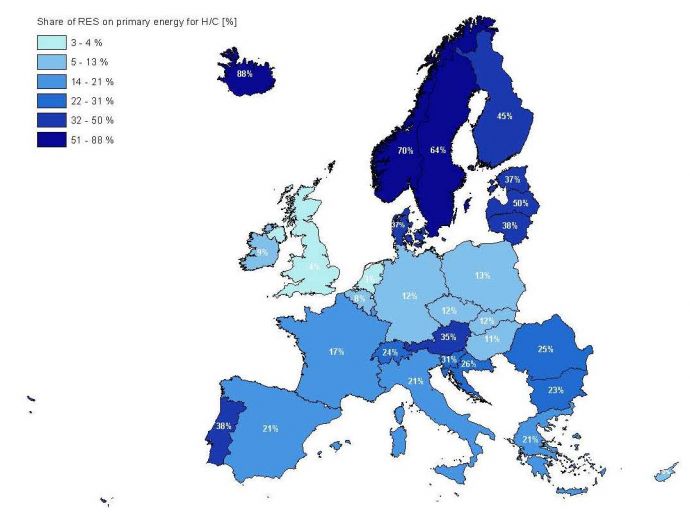FORECAST/eLOAD
-
07.08.2020 Industrial excess heat for district heating: Database shows great potential for supplying households
Excess heat from energy-intensive industries is often suitable for use in district heating systems but is usually unutilized. A detailed overview of the potentials available in the EU is now provided by a database of the sEEnergies project. In Germany, 29 petajoules of excess heat from industrial sites could be used, which corresponds to the demand of more than half a million households. The information is available as maps and downloadable datasets.
Energy demand for heating and cooling in EU countries – the most detailed profiling to date
25.04.2016
In a recently published study for the European Commission, the models FORECAST and INVERT/EE-lab were used for a detailed profiling of the energy demand for heating and cooling in industry, services and the residential sector. …
The data reveals the final,
primary and useful energy demand for individual end-uses including process
heating, water heating, space heating, process cooling, space cooling and
cooking. For the industrial sector, different temperature levels are also considered.
These end-uses are disaggregated by country, energy carrier, sub-sector,
rural/urban area and multi-/ single family houses. The resulting energy demand
matrices represent the most detailed and comprehensive break-down of Europe’s
energy demand heating and cooling to date.
![Figure: Final energy demand for EU28 by end-use for heating and cooling in all sectors in 2012 [TWh]. Figure: Final energy demand for EU28 by end-use for heating and cooling in all sectors in 2012 [TWh].](/forecast-wAssets/img/weblication/wThumbnails/MappingWP1andWP2-_Grafik1-neu-e34712ad71b155ag2ab3ecfe12e2c228.jpg)
Final energy for heating and cooling accounts for about 51% of total final energy consumption, which was roughly 12,800 TWh in 2012. Space heating is the most relevant end-use with a share of 52% in the total final energy demand for H/C (~3350 TWh), followed by process heating, which makes up 30% (~2000 TWh). Water heating (sanitary hot water) accounts for about 10% (~640 TWh), cooking in the residential sector for about 2% (~200 TWh) and cooling for 3%, with about 130 TWh for space cooling and about 190 TWh for process cooling (see figure).

The project focused on the
importance of renewable energy sources. The share of renewables in 2012
ranged between
3% (Netherlands) and 88% (Iceland). Additionally, particularly countries
with
large wood reserves show high RES shares, i.e. the Baltic and
Scandinavian
countries (see map).
The analysis provided the
quantitative basis for the recently published EU proposal of a heating
and cooling
strategy for Europe.
The results are part of the
project “Mapping and analyses of the current and future (2020 - 2030)
heating/cooling fuel deployment (fossil/renewables)”. Work packages 1
and 2 can
be downloaded here.
More about the proposed heating and cooling
strategy can be found here.
© 2024 Fraunhofer ISI | Publishing Notes | Data Protection


